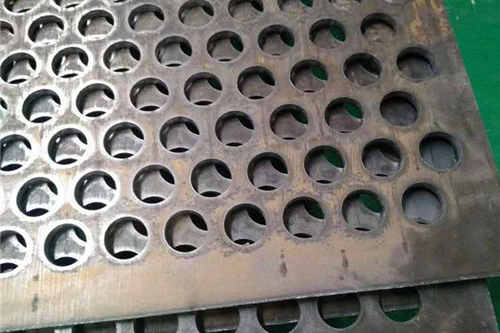How to Clean and Maintain Stainless Steel Perforated Sheets? A Practical and Detailed Maintenance Guide
Source:www.cn-psp.cnAuthor:河北森驰公司 Last updated:2025-06-14 15:59:19 Browse:
Stainless steel perforated sheets are widely used in architectural decoration, industrial filtration, ventilation panels, and more due to their excellent corrosion resistance, sleek appearance, and versatile applications. However, it is a common misconception that stainless steel never rusts. In fact, if neglected, stainless steel can corrode, especially when exposed to environments containing chlorides (such as sea air, salt spray, sweat, or soil).
To maximize the lifespan of stainless steel perforated sheets and preserve their mechanical properties and appearance, it’s essential to follow a proper cleaning and maintenance routine. Here are some practical tips:
1. Keep the Surface Clean and Dry – The First Rule of Maintenance
Regular cleaning is the first line of defense against corrosion. Even in indoor environments, stainless steel perforated sheets can accumulate moisture, dust, grease, and pollutants that may trigger chemical reactions, leading to discoloration or surface damage.
Daily maintenance recommendations:
Wipe the surface with a clean, soft cloth or sponge to remove dust, fingerprints, and water stains.
For stubborn dirt, use a diluted neutral detergent (such as dish soap) with warm water. Rinse thoroughly with clean water.
Always dry the surface completely with a clean towel to avoid water marks or limescale that may cause corrosion over time.
2. Dealing with Minor Rust Spots
Although stainless steel can self-passivate, minor rust spots may still appear, especially in coastal or humid environments.
Recommended treatment methods:
Gently clean affected areas with a soft cloth dipped in warm water.
For better results, use a non-chloride, neutral cleaning solution.
Avoid abrasive cleaners or acidic/alkaline agents to protect the surface finish.
Common causes of rust include kitchen grease, detergent residue, and construction dust—all of which may seem harmless but can initiate corrosion if not removed in time.
3. Handling More Severe Corrosion
If rust or corrosion is more widespread or visibly severe, regular cleaning methods might not be sufficient. You can take the following approach:
Use fine sandpaper (800 grit or above) to gently polish the rusted area along the grain of the stainless steel.
After polishing, clean any debris with a lint-free damp cloth.
For optimal results, consider professional repolishing to restore the sheet’s original luster.
Important Note: Always polish in the direction of the metal grain or perforation to avoid surface scratches or uneven texture.

Stainless steel perforated sheets
4. Extra Tips for Corrosion Prevention
Besides basic cleaning, you can take further measures to improve the corrosion resistance of stainless steel perforated sheets:
Protective Coating: Apply a transparent anti-fingerprint coating or stainless steel protectant spray to block moisture and contaminants.
Avoid Contact with Carbon Steel: During installation, prevent direct contact between stainless steel and carbon steel materials to avoid galvanic corrosion.
Regular Inspection: In outdoor or high-humidity environments, schedule a full maintenance check every 3 to 6 months.
5. Real-World Scenarios Where Maintenance Matters
Architectural Facades: Constant exposure to wind and rain means regular cleaning prevents acidic corrosion from rainwater.
Kitchen Ventilation Panels or Filters: Frequent grease buildup can reduce airflow efficiency and promote localized corrosion.
Factory Partitions or Sieves: Long-term exposure to chemicals or industrial dust requires heightened maintenance.
Conclusion
While stainless steel perforated sheets are strong and corrosion-resistant, they are not completely maintenance-free. A thoughtful cleaning routine combined with proper protective measures can significantly extend their lifespan and preserve their clean, metallic finish. Whether used in home décor or industrial applications, good maintenance habits are key to maximizing their value.
Remember: Stainless steel doesn't mean stain-proof—but with the right care, your perforated sheets can stay shiny, durable, and beautiful for years to come.
If you’d like more information about the different types of stainless steel perforated sheets, their performance, custom fabrication options, or industry-specific applications, feel free to contact our support team for expert assistance.
